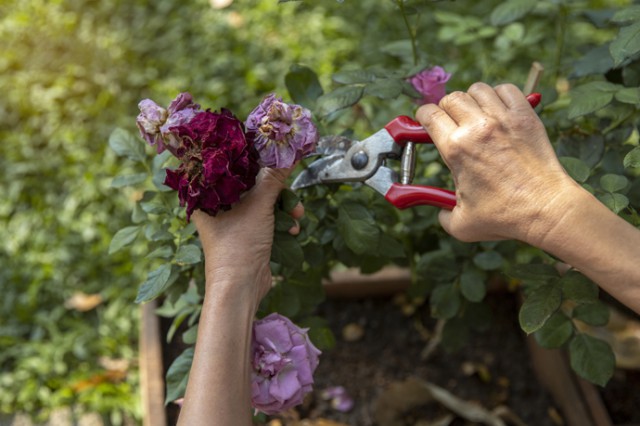August Gardening To-Do List

Remove dead flowers from all bedding plants.
Once a flower has finished blooming, the plant will start to focus energy instead on producing seeds. By deadheading your flowers, you will keep your plants in the flowering state for longer and keep your flower beds looking beautiful! The easiest way to do this is to simply pinch the flower head between your finger and thumb and pluck them off.
Tidy ponds and remove duckweed.
Whilst duckweed does have some benefits, it can be dangerous to your pond when it spreads too much. If it covers too much of the surface area, it will deprive your pond life and algae of oxygen. To remove duckweed, grab a regular garden rake and run it carefully across the surface, raking the leaves together so they are easier to remove.
Trim Hedges.
Hedges grow vigorously over the summer months and so it is important to keep up with your maintenance trimming. Be sure to check your hedges thoroughly for any wildlife, especially wild birds that may be nesting. The nesting season should have finished by August, but it is always best to be cautious and make sure.
Start applying autumn lawn feed.
Spring and Summer's lawn feed contains a high amount of nitrogen, so it is advisable to switch to an Autumn feed from August onwards. If too much leafy growth is encouraged this month, it is more likely to be damaged over the coming colder months. Follow the instructions on the pack to get the best results from your lawn fertiliser.
Plant spring-flowering bulbs such as daffodils and tulips.
Summer is not over quite yet, but it is time to start thinking about Spring. Most spring bulbs can be planted from the end of August onwards, so start planning and getting prepped. It is important to get them into the ground before the frost arrives, so they can establish nice healthy roots and get settled.
Push straw or tiles under ripening pumpkins.
Pumpkins, like many fruited vegetables, are very thirsty plants and need some help over the warmer months. We recommend placing a layer of straw or tiles under the pumpkins. This layer will help to keep the ground cool, preventing any moisture loss from the soil.
Harvest early fruiting apples and pears.
Some earlier fruiting varieties of apples and pears are ready to starting picking towards the end of August. You can test your fruits to see if they are ready to pick by cupping them and giving the stalk a slight twist. If it comes away easily without too much pulling, then you can pick the fruit! Another way to check the maturity of your harvest is to have a look at the pips inside. With apples, the pips of ripe fruit will be brown – if the pips are green then they need to be left a little bit longer.
Harvest runner beans daily and freeze any surplus!
Pick your pods when they are young and tender – anywhere from 15cm / 6” and longer. They are at their most delicious when the seeds inside have not yet started to swell. It is also important to stop any pods from reaching maturity, as this triggers the plant to stop producing. If you find yourself with a surplus of runner beans, they are perfect for home freezing! Prep your beans as you would for cooking, then blanch them to retain as much of the flavour and colour as possible. These frozen batches will be perfect for your autumnal roast dinners.
Runner beans are perfect to harvest now and freeze for later!







